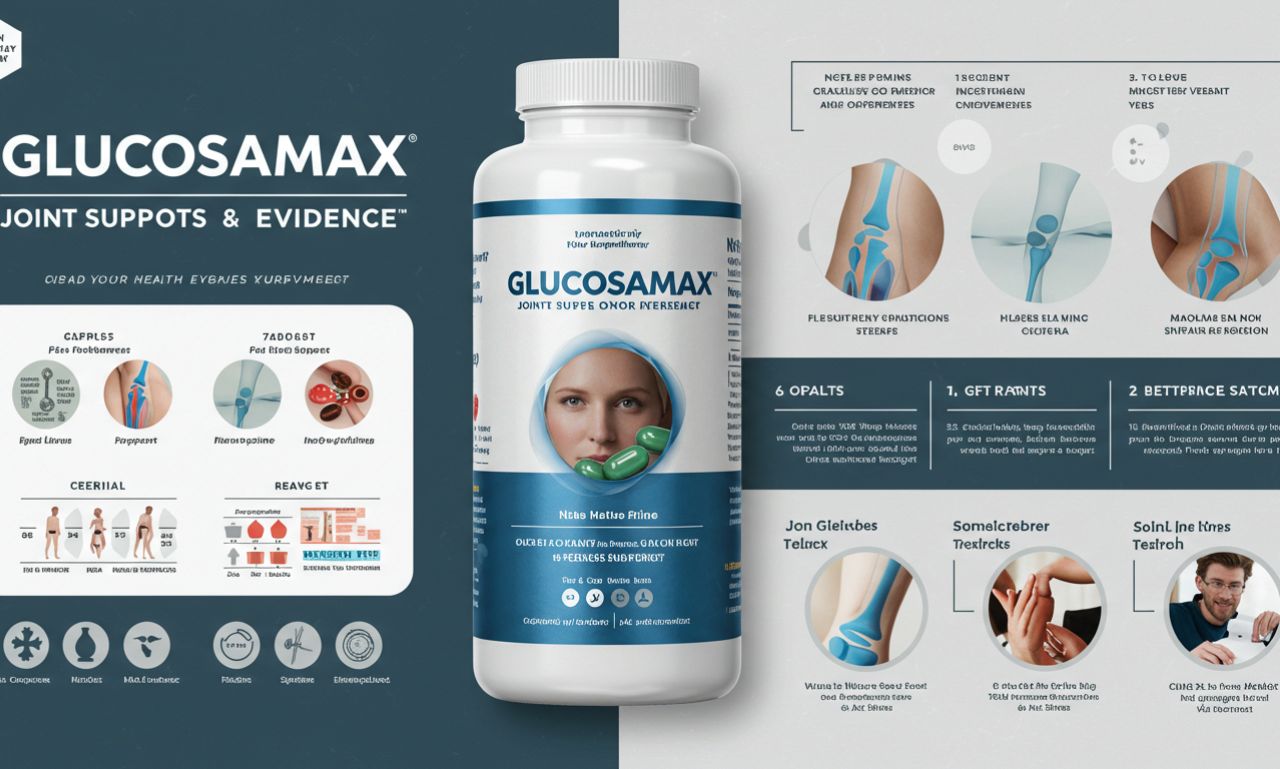Glucosamax is a branded form of glucosamine—an amino sugar widely used in dietary supplements for joint health. Found naturally in cartilage, glucosamine supports connective tissue maintenance and joint function, making it a popular choice for those experiencing osteoarthritis or joint discomfort.
Glucosamax Composition and Forms
Glucosamax typically contains glucosamine sulfate, though some formulations use glucosamine hydrochloride. Both forms aim to provide building blocks for cartilage, though glucosamine sulfate has more extensive clinical backing.
Mechanism of Action
Glucosamax, like other glucosamine products, is theorized to:
-
Stimulate the production of glycosaminoglycans (GAGs) in cartilage
-
Inhibit breakdown by reducing inflammatory pathways such as NF-κB
This dual mechanism may help maintain joint structure and alleviate pain.
Glucosamax Efficacy: What Research Shows
Scientific studies on glucosamine—including branded products like Glucosamax—show mixed results:
-
Knee osteoarthritis may benefit modestly, with some studies reporting improved pain and function.
-
Larger trials and meta-analyses remain inconclusive; the American Academy of Orthopaedic Surgeons does not support glucosamine sulfate for hip osteoarthritis.
-
A 2025 systematic review found that glucosamine plus chondroitin showed beneficial effects in over 90% of joint pain studies—often administered at 1,500 mg and 1,200 mg daily, respectively.
Glucosamax in Context of Global Guidelines
Organizations vary in their recommendations:
-
Europe: Glucosamine sulfate is often approved and prescribed for osteoarthritis.
-
USA: Glucosamax, as a dietary supplement, is not FDA-approved for joint disease, though widely used.
-
Arthritis Foundation/American College of Rheumatology: Offer conditional or moderate recommendations for use in certain settings, particularly hand osteoarthritis.
Glucosamax Safety and Side Effects
Glucosamax is generally considered safe and well tolerated, with most side effects being mild:
-
Gastrointestinal upset (e.g. heartburn, nausea)
-
Headache, rash, or drowsiness in rare cases
-
Possible elevation of INR in patients on warfarin
-
Shellfish-derived products may trigger allergic reactions; alternatives exist.
Dosing and Usage Recommendations
Typical glucosamine sulfate dosing—often seen in Glucosamax products—is 1,500 mg per day, frequently split into three doses of 500 mg each.
A trial period of 60 days is recommended for assessing tolerability and effectiveness.
Advanced Insights: Beyond Joint Pain
Emerging research explores broader benefits of glucosamine supplements:
-
Prevention of osteoarthritis in athletes—high-dose use (2–3 g/day) showed positive effects on cartilage biomarkers.
-
Cardiovascular & cancer risk reduction—initial studies show associations with lower mortality, though mechanisms remain speculative.
-
Colorectal cancer prevention—long-term use (≥3 years) of glucosamine plus chondroitin may correlate with lower CRC risk in one cohort study.
Practical Tips for Using Glucosamax
-
Consult your healthcare provider, especially if you have diabetes, are on blood thinners, or have shellfish allergy.
-
Use consistently for at least 2 months to assess benefit.
-
Pair with chondroitin for potential enhanced effect, unless contraindicated.
-
Monitor for mild side effects and stop if unresolved.
-
Buy from reputable brands to ensure accurate labeling and dosage.
Conclusion
Glucosamax, a branded glucosamine sulfate supplement, offers a promising—but modest—option for managing joint discomfort, especially in osteoarthritis. While evidence varies, many users report symptom relief, and the supplement remains safe when used responsibly. Emerging research hints at additional benefits, making Glucosamax an intriguing subject for ongoing study.
Ultimately, Glucosamax may serve best as an adjunct or preventive strategy for joint health, particularly when combined with lifestyle measures like weight control, exercise, and conventional treatments. Use it thoughtfully—and always stay informed with the latest clinical guidance.
